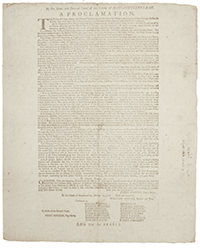As a long-time Jamaica fanatic, I was excited to come across an in-4° plate engraved by James Basire and entitled Antient Wooden Figures Found in Jamaica. It was, as the caption reads, “published by the Society of Antiquaries of London”—although my plate is detached, it was originally bound in Archaeologia, or Miscellaneous Tracts relating to Antiquity (London, 1803). It represents three pre-Columbian artefacts, made by the Taino Indians (from the Arawak group), who were the first inhabitants of the island of Jamaica. The conquistadores exterminated them in the early part of the 16th century, so very little is known about them.
Looking at the plate, I wondered: what had become of these figures? Were they formally identified as being Taino? It brings us back to the second voyage of Christopher Columbus, in 1494, when Jamaica was the most populated island in the West Indies—around 60.000 inhabitants. Ten years later, Columbus wrecked his ships on the north coast, where he was stuck for several months. He then had many exchanges with the Taino. When they grew tired of feeding the Spaniards, Columbus cunningly took advantage of an eclipse to pretend his God was angry at them. According to this dubious tale, the Indians fell on their knees, begging Columbus to bring back the sun. He did, and was fed with no further ado until he departed from Jamaica—never to return. In 1507, his son and heir, Diego sent an emissary to capture Jamaica. Hard work, diseases, massacres—the Taino were exterminated in less than a century. Unfortunately, they haven’t left much behind them. Today, only 12 Taino sculptures from Jamaica are known, including the ones on the plate—so they have an important historical value.
After they were found, the figures were immediately taken to London, where one Isaacs Alves Rebello exhibited them to the Society of Antiquaries on April 11, 1799. They were later “acquired by the Museum from the prolific London collector and dealer in ethnographic art, William Ockleford Oldman (1879-1949). Unfortunately, details of their acquisition are unclear. (...) There's no record of their provenance history before that date and, in particular, no information on the circumstances of their removal from Jamaica,” the returningheritage website underlines. In the minutes of the 1799 exhibit, we read that they are “supposed to be of Indian deities in wood, found in June 1792, in a natural cave near the summit of a mountain, called ‘Spots’, in Carpenters Mountain, in the Parish of Vere, in the island of Jamaica, by a surveyor in measuring the land. They were discovered placed with their faces (one of which was that of a bird) toward the east.”
The statue in the middle has a canopy over its head, “suggesting similar appendages in certain wooden idols from Santo Domingo,” the 25th Annual Report of the Bureau of American Ethnology (Washington, 1907) states. The one on the right is quite expressive, giving us a screwface, as Jamaicans would say—grinning—, while pointing at its penis. The last one has the face of a bird—it is therefore known as the Birdman**—, and its legs are quite peculiar. It reminded the observers of “a habit of the natives of the island of Guadeloupe of wearing ‘two bands of woven cotton, the one fastened around the knee and the other one around the ankle; by this means, they made the calf of the leg large and above-mentioned parts very small.” The report concluded by hoping that “some ethnologist may publish later more detailed descriptions of these objects.” And one did—her name is Joanna Ostapkowicz from the University of Oxford, and she published a fascinating article in 2015*: “A link between the Carpenter’s Mountain figures and the cohoba*** ceremony has long been assumed: the smallest of the carvings is an anthropomorphic cemí (representation of a spirit, deity or ancestor) with a round platform above its head—a feature associated with ‘cohoba stands’, whereupon the drug was placed to be inhaled.” Smoking to get high in Jamaica? Come on...
In fact, these figures are very famous among connoisseurs, and it didn’t take long to find out their current location: the British Museum, in London. The Birdman—listed as artefact Am1977, Q.2—is 87 centimetres high, and “made by: Arawak” around AD 1028–1156. “The prominent beak and extended wings identify him as a bird, probably alluding to the idea of shamanic flight,” the website of the Museum reads. “This spirit being (cemi) of a bird-man seems to embody the archetypal husband whose long beak is celebrated in myths and folktales as the instrument for activating the reproductive potential of "proto-women", creating sexual beings to ensure the continuity of the social group.” The screwface one is also listed (Am1977, Q.3): “According to Bercht et al. 1997, p.73 this figure has been identified as the Boinayel the Rain Giver. The tears that stream from his eyes signify the magical tears that created rain.” The British Museum goes on: “Like most of the other surviving wooden objects, it is carved from the dense, black tropical hardwood, guayacan (Guaiacum officinale L.). The prepared surface was polished with rounded river pebbles to bring the wood resin to the surface and help achieve an alluring deep black lustre.” What the plate fails to render is the fact that it is 1 meter high! As a matter of fact, although this gorgeous plate printed on thick paper has a unique flavour, the British Museum’s pictures beat it by far! Here, the figures appear shiny and raw; the wood density makes their presence even more powerful; so much that the government of Jamaica would like to get them back.
In 2018, Jamaican Minister of Culture Olivia Grange publicly called on the British Museum to return several Jamaican cultural artefacts, including the Birdman and Boinayel. During an interview with the Jamaica Gleaner, she said: “They are priceless, they are significant to the story of Jamaica, and they belong to the people of Jamaica. They are not even on display.” The British Museum dismissed the accusation of not displaying the artefacts—they are, the Museum spokesperson said, lent extensively. Over the last decades, the Birdman went to Norwich, Barcelona, Paris, Madrid, etc.; for his part, Boinayel went to Tokyo, Mumbai, Paris, and was last in New Delhi, India, in 2018. In her article, Ostapkowicz gives a precise idea of everything that has happened to them since 1799. Some parts remain obscure, though: “Rebello died (...) in 1805, and it is unclear as yet whether he donated the carvings to the British Museum during his lifetime, or whether they remained with his family after his death; in either case there is no mention of them in his will.” In 2019, the returningheritage website pointed out: “There’s no suggestion that (...) the British Museum acquired the two Taíno sculptures illicitly. Even despite the restrictions on disposals imposed by the British Museum Act 1963, it’s hard to see how any formal application for their return could be entertained by the British Museum without more information from the claimants on how these carvings arrived in Britain and what specific grounds there may be for their return.”
These figures seem to legitimately belong to Jamaica. As Ostapkowicz puts it, “despite their absence from the island for over two hundred years, they have become icons for Jamaica’s indigenous history.” Yet they are also the common heritage of mankind—especially since there’s no Taino left in Jamaica. Their being kept in London reflects the interconnections of human societies that very often exterminate each other, indeed; but that are also fascinated with each other. This is what these figures tell us from London, and what they might stop telling us if ever returned to Jamaica—but who knows what story they might tell us from there?
*researchgate.net/publication/280155657_The_Sculptural_Legacy_of_the_Jamaican_Taino_Part_1_The_Carpenter's_Mountain_Carvings
** “Since Handler popularised the title in 1977,” Ostapkowicz states.
*** “Cohoba, also called Yopo, hallucinogenic snuff made from the seeds of a tropical American tree (Piptadenia peregrina) and used by Indians of the Caribbean and North America at the time of early Spanish explorations.” (Britannica)
Pictures © The Trustees of the British Museum


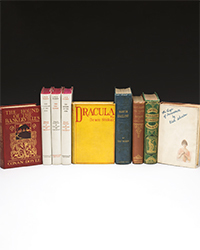
![<b>Heritage, Dec. 15:</b> John Donne. <i>Poems, By J. D. With Elegies on the Author's Death.</i> London: M[iles]. F[lesher]. for John Marriot, 1633. <b>Heritage, Dec. 15:</b> John Donne. <i>Poems, By J. D. With Elegies on the Author's Death.</i> London: M[iles]. F[lesher]. for John Marriot, 1633.](https://ae-files.s3.amazonaws.com/AdvertisementPhotos/8caddaea-4c1f-47a7-9455-62f53af36e3f.jpg)
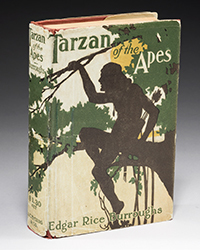
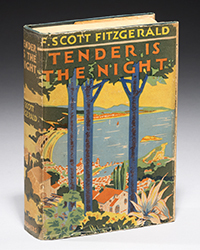
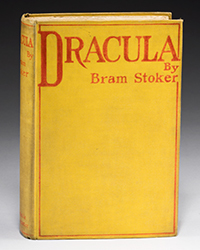
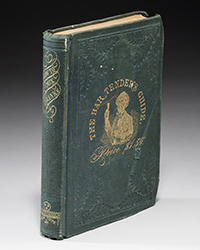

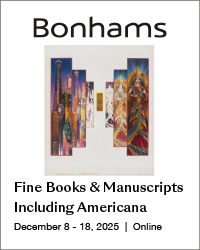

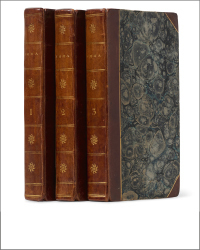
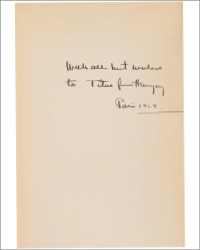
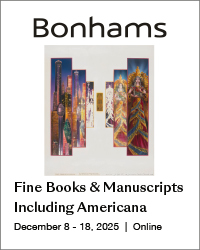
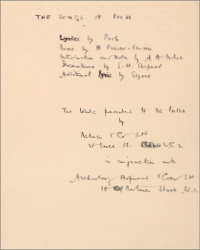

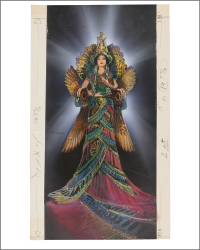
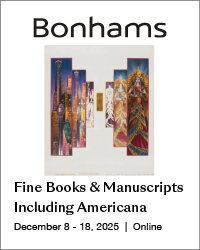
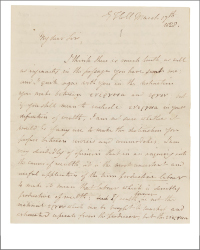
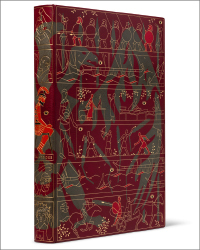
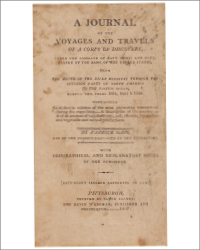
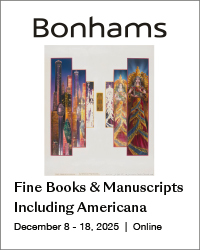
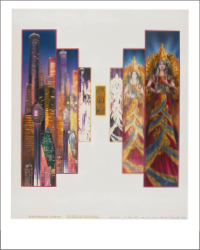
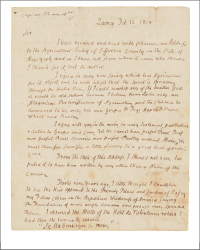

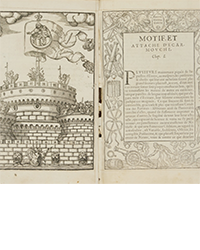
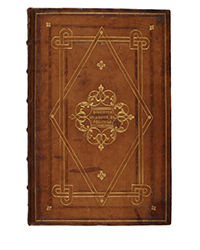
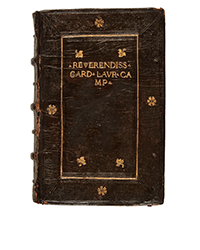
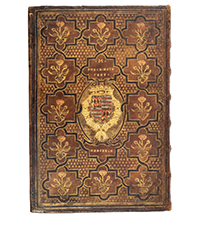
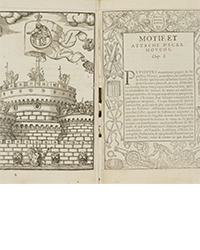
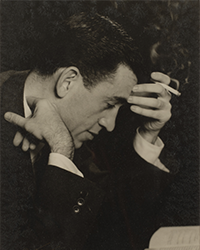
![<b>Sotheby’s, Dec. 16:</b> [Austen, Jane]. A handsome first edition of <i>Sense and Sensibility,</i> the author's first novel. $60,000 to $80,000. <b>Sotheby’s, Dec. 16:</b> [Austen, Jane]. A handsome first edition of <i>Sense and Sensibility,</i> the author's first novel. $60,000 to $80,000.](https://ae-files.s3.amazonaws.com/AdvertisementPhotos/9a74d9ff-42dd-46a1-8bb2-b636c4cec796.png)
